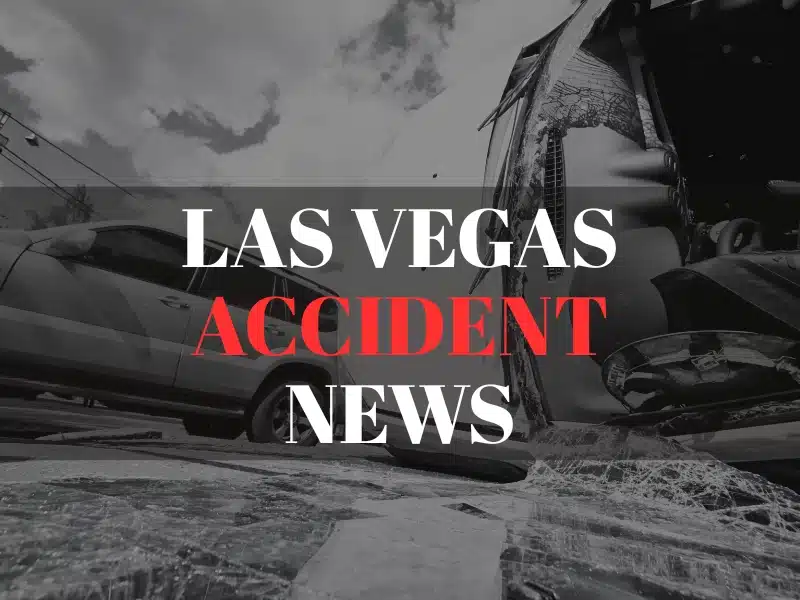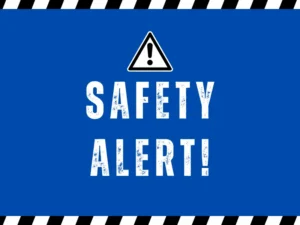Las Vegas, NV (July 14th, 2025) – The National Weather Service has issued an extreme heat warning for Southern Nevada today, with temperatures expected to reach up to 113°F.
Las Vegas summers are hotter and longer than ever. Last summer saw the city hit record-breaking temperatures, as well as streaks of consecutive days in excess of 115°F and 105°F. When the National Weather Service issues an extreme heat warning, it’s not just a heads-up. It’s a direct threat to anyone working outdoors or in uncooled indoor spaces. Construction crews, delivery drivers, landscapers, warehouse workers, and hotel staff are among the many groups at risk. The longer a person works in the heat, the greater the chance of serious illness or even death.
Heat Illness at Work: A Growing Threat in Southern Nevada
In Las Vegas, dangerous heat isn’t confined to July and August. May often sees 100°F days, and the temperature sometimes remains in the 90s even after the sun goes down. That gives the human body little chance to recover from heat exposure.
When temperatures climb and there’s no relief, the body struggles to regulate itself. Sweating causes fluid loss, which can thicken the blood and force the heart to work harder. As the core temperature rises, mental function and physical coordination decline. In extreme cases, vital organs begin to fail. Heat stroke can be deadly if not treated immediately.
Prolonged exposure, inadequate hydration, and poor air circulation are a dangerous combination, especially in environments like warehouses without AC, or on job sites where reflective surfaces and hot equipment amplify the heat.
Common Types of Heat Illnesses
When a person’s body can’t cool itself fast enough, heat-related illnesses can develop quickly, and sometimes without much warning. Several distinct conditions fall under the umbrella of heat illness, each with its own symptoms and level of severity.
Recognizing which type of heat illness is occurring, and how quickly it may be escalating, can make all the difference in protecting a worker’s health and safety.
Heat Rash
Heat rash is often the first sign that the body is struggling in hot conditions. It appears as small red bumps or blisters, usually in areas where sweat is trapped underneath clothing, like the neck, chest, or inner arms. While not dangerous on its own, heat rash can become painful or lead to infection if not treated. Moving to a cooler, dry environment and keeping the affected area clean usually resolves it.
Heat Cramps
Heat cramps are painful muscle spasms, commonly felt in the legs, arms, or abdomen. They usually occur after intense physical activity in the heat, when the body has lost too much salt and fluid through sweating. Rehydrating with water and electrolyte drinks and taking a short break in a shaded area can usually relieve the cramps. However, they often serve as a warning sign that more serious heat illness may be developing.
Heat Exhaustion
Heat exhaustion happens when the body becomes dehydrated and overheated, but hasn’t yet reached a critical point. Symptoms include heavy sweating, fatigue, dizziness, headache, nausea, and a rapid heartbeat. The skin may feel cool and clammy, even in extreme heat. Without intervention, rest, cooling, and fluids, heat exhaustion can progress to heat stroke. Anyone showing signs of heat exhaustion should stop working immediately and move to a cooler location.
Heat Stroke
Heat stroke is the most dangerous form of heat illness and requires emergency medical attention. It occurs when the body’s core temperature climbs to 104°F or higher, and its cooling system shuts down. Symptoms may include confusion, disorientation, slurred speech, loss of consciousness, or even seizures. Unlike other heat illnesses, sweating may stop completely. Heat stroke can cause permanent organ damage or death if not treated immediately. Rapid cooling, using ice, fans, or cold water, is essential while waiting for medical help to arrive.
Recognizing symptoms early can prevent a bad situation from becoming life-threatening. Workers should be on alert for signs that their bodies are struggling to keep up.
High-Risk Jobs in Extreme Heat
Certain occupations face higher risks than others. In Las Vegas, construction workers are frequently exposed to extreme heat while performing physically demanding tasks. Asphalt crews often work on surfaces that exceed 150°F. Roofers and solar panel installers are exposed to heat from above and below, increasing their risk significantly.
Resort landscapers often operate outdoors for long stretches with limited shade, while warehouse workers may labor in metal buildings that trap heat and lack proper ventilation. Valet drivers and transportation workers, too, spend hours under the desert sun, moving between vehicles and blacktop parking areas.
In all of these jobs, radiant heat, physical effort, and limited recovery time increase the risk of dehydration and overheating. Employers should plan accordingly, and workers should stay aware of their own limits.
What Workers Can Do to Stay Safe
Las Vegas workers have options when it comes to protecting themselves during an extreme heat event—especially when employers fall short.
First, keep an eye on the forecast. The National Weather Service will issue heat warnings when conditions are expected to reach dangerous levels, as are expected this week. When that happens, workers should approach the day with extra caution.
It’s important to ease into the heat gradually. New hires or returning workers should be given time to acclimate, ideally over one to two weeks, so the body can adjust to the higher temperatures.
Hydration is key. Workers should drink water regularly throughout the day, not just when they feel thirsty. Sports drinks or electrolyte solutions can help replace lost minerals, but sugary energy drinks should be avoided. Eating lighter meals and limiting caffeine can also help the body cope with the heat.
Clothing can make a difference. Loose-fitting, light-colored clothing reflects heat, while a wide-brimmed hat and UV-protective sunglasses provide additional defense. When possible, choose breathable fabrics like cotton over synthetics.
One of the most effective tools is the buddy system. Workers should look out for one another, checking in periodically for signs of heat illness. If someone seems unwell or off-balance, it’s better to speak up early than to wait for symptoms to worsen.
What If You’re Hurt By Heat On the Job?
When someone suffers a heat-related injury at work, it’s not always a quick recovery. In some cases, heat stroke can lead to permanent organ damage, neurological problems, and long-term fatigue. Even less severe incidents can lead to missed work and mounting medical bills.
Workers’ Compensation Coverage
In Nevada, most job-related heat illnesses are covered under workers’ compensation. That includes the cost of emergency medical care, follow-up treatment, and wage replacement if the worker can’t return to the job right away.
To start a workers’ comp claim, the employee needs to notify their employer within seven days of the injury and file a C-4 form with their treating physician. The clock starts ticking right away, so it’s best to report the injury as soon as possible, even if symptoms seem minor at first.
Third-Party Injury Claims
Not every heat-related injury is just a matter of bad luck or poor hydration. If a third party, like an equipment supplier, contractor, or property manager, contributed to unsafe conditions, that might open the door to a separate personal injury claim.
For example, if a rented cooling unit failed on a job-site and workers became sick as a result, the supplier might be liable for damages. Third-party claims allow injured workers to seek compensation for pain and suffering, long-term health impacts, and losses not covered by workers’ comp.
Protect Yourself and Know Your Rights
When the heat turns dangerous, Las Vegas workers need more than sunscreen and a bottle of water. They need employers who take heat safety seriously, and legal support when those employers fall short.
If you’ve been injured by extreme heat on the job, contact George Bochanis Injury Law Offices. We’ve helped countless injured workers hold employers and third parties accountable after heat-related injuries. Call 702-388-2005 or visit our downtown Las Vegas office to schedule a free consultation today.





